New Boston Historical Society
New Boston, New Hampshire
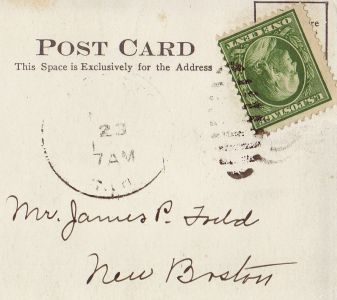
The Past in Postcards
Cardboard Clues to the History of New Boston
- Postcards are labeled. Often the publisher prints a picture title, or the sender explains what's in the picture.
- Postcards are dated. Postmarks tell us when a postcard was mailed, if not when it was printed.
- Postcards sometimes contain a story; a peek into the life of a New Boston resident or visitor.
- Postcards are collectable. They were printed individually or by the dozens, and are still collected and traded one hundred years later.
Here are some examples of postcards from New Boston's past:
The Valley View Farm owned by hotelier J. R. Whipple was the biggest business in town around 1900.
J.R. built a state-of-the-art Creamery just behind the general store pictured in this postcard. The Creamery processed milk from dairy farms in New Boston and nearby towns.
Handwritten around the edge of this postcard is a note from one of J.R.'s newest employees. We have photos of the Creamery workers (see "About the Farm") but it's interesting to read this personal message, which we've copied below the postcard.
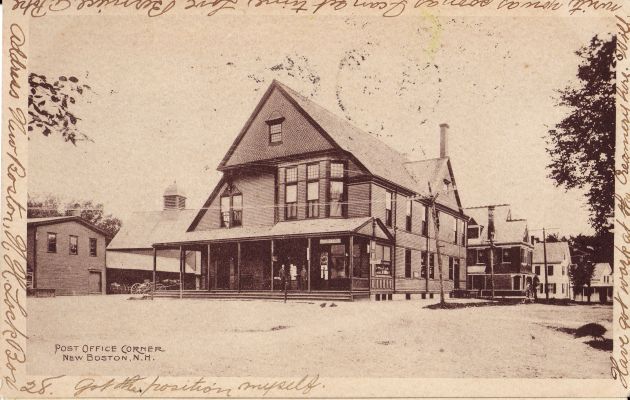
Have got work at the Creamery here. Will write you as soon as I can get time.
Love, Bernice A Pope.
Address New Boston, NH. Lock Box 28.
P.S. Got this position myself.
(Sent to Miss Flora F. Stevens of Concord NH. Postmarked July 24, 1907.)

If you eat pork in one of the Boston hotels that are run by the Whipple brothers
you will know that you are eating one of these pigs.
(signed) Helen W.
(Sent to Miss Rita Phillips of Brant Rock, Mass. Postmarked July 24, 1919.)
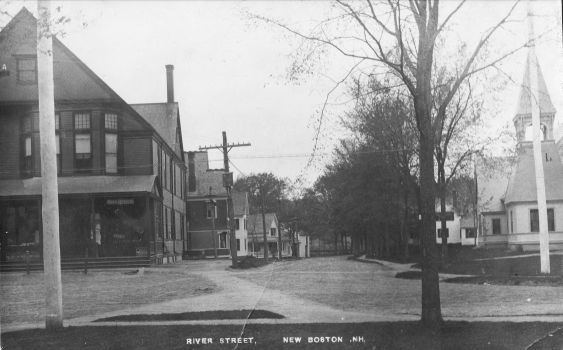
May 23, 1919.
Dear Friend:
Will write a letter soon.
I am way behind in history so I will not take time to write a letter but will answer yours by a card.
This is the street I live on. At the end you see a bridge. I live two houses below that on the other side.
1 is the baptist church.
2 is Brown & Holts' store. When this picture was taken the post office was there.
Above the store is the Valley hall on the right and the barber shop on the left.
Well there is no more room.
Love, Henrietta Blanchard
(Sent in 1919 to Miss Clara Becker, Paynesville, Minnesota.)
"X" marks the spot in the postcard below. W.M.P. wrote about the New Boston Tavern:
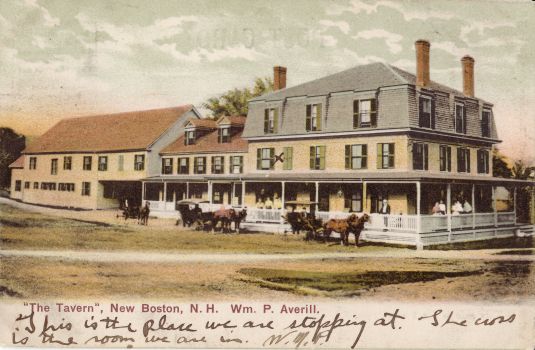
This is the place we are stopping at. The cross is the room we are in.
Careful inspection of a postcard with a magnifying glass sometimes reveals interesting clues to New Boston's past.
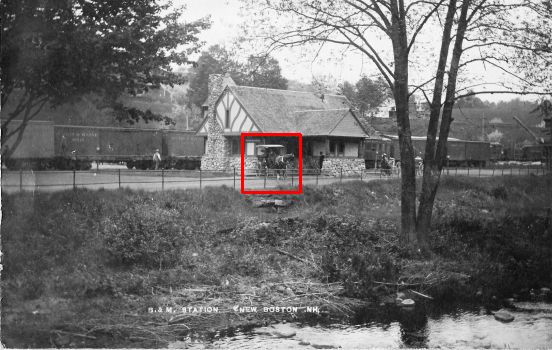
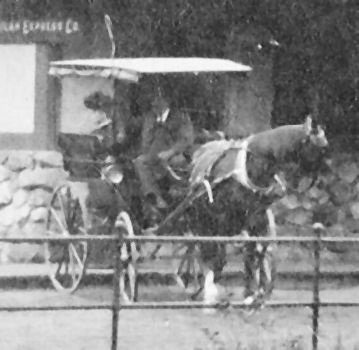
The New Boston Graded School (later the High School) was built in the village center, burned, rebuilt, remodeled, and eventually torn down. Postcards let us see changes to the school, as in the second photo showing the addition of classrooms to either side of the newly-enclosed front entrance:
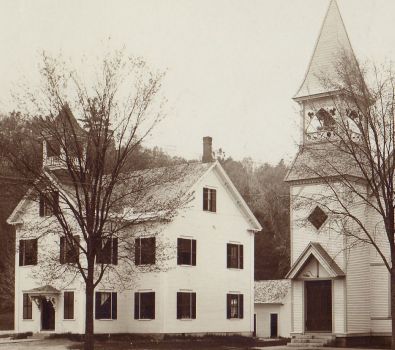
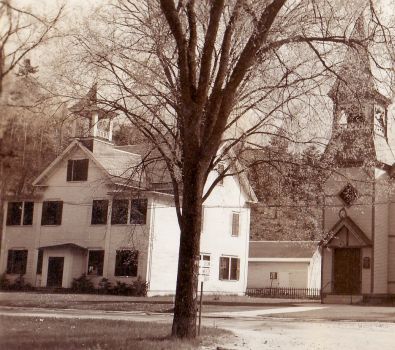
Some postcard trivia:
The "Real Photo Postcard" (RPPC) was invented by Kodak in the early 1900s to enable people to make a postcard from any photo. RPPCs are delightful because of their fine detail. Let's compare them to mass-produced postcards with their newspaper-like half-tone photographs, using two New Boston postcard examples.
Many commercially printed postcards show tiny halftone dots under a magnifying glass:

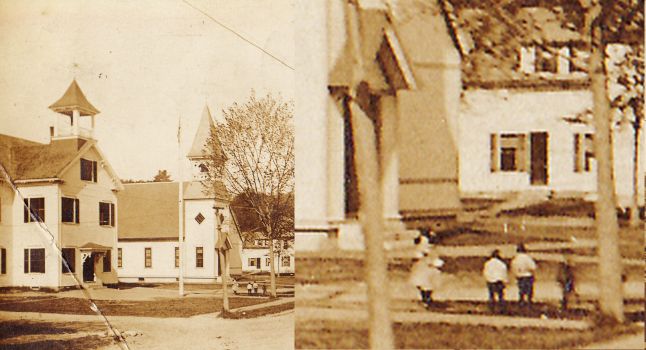
The Real Photo Postcards are most useful to researchers as the detail lets us read signs, inspect the contents of shop windows, and recognize objects more easily than with the halftone images.
Some of the cards in Ivan's collection were printed by the Frank W. Swallow Postcard Company of Exeter, N.H.
Frank Swallow and his "Swallow girls" printed hand-colored postcards in the first half of the 20th century. He claimed to be "the First to Introduce the Souvenir Post Card to One-Half of New England" and marked his cards with a picture of a swallow bird. Rather than send his postcards to Germany for color printing, he employed an assembly line of local women to hand-paint the cards with water colors. (Source: "Postcards from Exeter" by Carol Walker Aten.)

Of course, many of the photos on the other pages of this website are from postcards in our collection.
We welcome any scanned images of historic New Boston postcards which you would like to share with the Historical Society.
